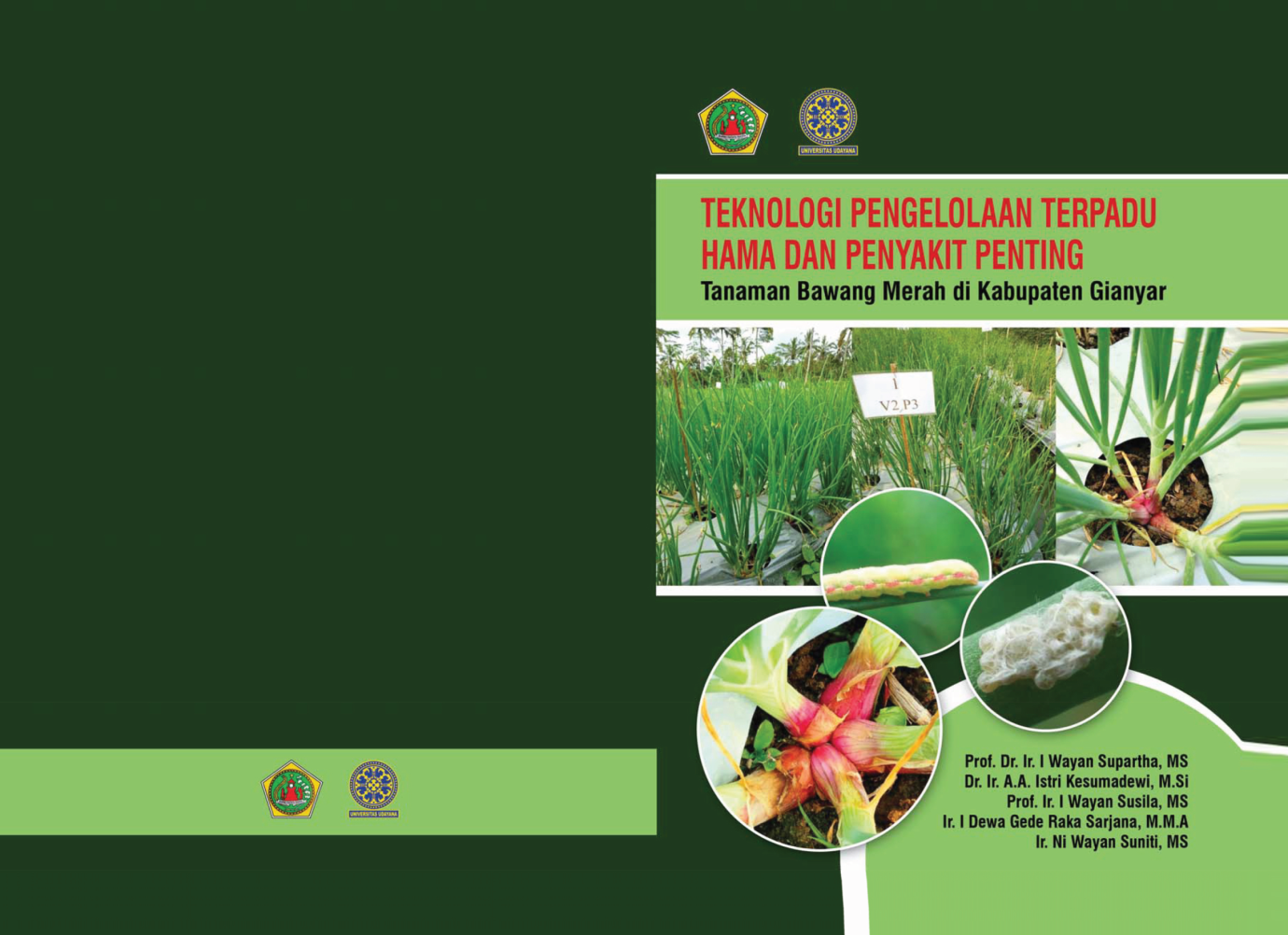
Integrated Management of Important Pests and Diseases of Shallots
I Wayan Supartha; A.A. Istri Kesumadewi, I Wayan Susila, I DGR Sarjana, Ni Wayan Suniti
ISBN : 978-602-5742-43-9 Published : 2018
Abstrak
Shallot is one of
the leading commodities of vegetables which is cultivated by farmers
intensively from the lowlands (<1 m dpal) to the highlands (> 1000 m
dpal). The commodity is cultivated intensively because it is a commodity that
has high economic value to sustain the economy of local and national
communities in Indonesia. Shallot commodities are also a source of income and
employment opportunities that contribute high to the regional economic
development. Therefore, various efforts were made to increase the development
of planting area, productivity and onion production to meet local, national and
export needs to encourage the growth of the country's foreign exchange from the
non-oil and gas sector. The main limiting factor that affects the productivity
of shallots is the attack of plant-disturbing organisms (pests) whose types and
extent of damage vary between time and space. The threat of production from the
onion pest group is felt by all onion farmers in the regency and / or other
regions in Indonesia, especially in the Regency of Gianyar. There are six
important groups of pests that are harmful to onion plants, namely onion grayak
caterpillar (S. exigua, S. litura), leaf
miner flies (Liriomyza spp), Thrips parpivinus, T. palmi, Fusarium oxysporum, spotting purple (Alternaria pori) and Anthrax. Efforts to
protect plants against these pest threats since 1986 The Government has issued
Presidential Instruction No. 3 of 1986 as a milestone in IPM in Indonesia. Then
it was reaffirmed in Law No. 12 of 1992 concerning crop cultivation systems
which stated that crop protection was carried out with the IPM system. However,
pest control on shallots is still relying on the use of chemical pesticides,
while other methods of control have not been done much. IPM on shallots as a
solution to the pest attack needs to strike a balance between environmental
dimensions and economic efficiency in the context of sustainable management of
its ecosystem. Therefore IPM strategies must synergize all compatible pest and
disease control techniques or methods based on ecological and economic
principles. The operational principles used in IPM are (1) healthy plant
cultivation, (2) conservation of natural enemies, (3) integrated ecosystem
monitoring, and (4) realizing active farmers as IPM experts. For that reason,
in 2018, assessment activities will be carried out implementation of integrated
pest and disease management (IPM) on onion plants in Gianyar Regency whose
activities include (1) evaluating the implementation of IPM onions that have
been and are being carried out by farmers, (2) identifying the types and
populations of important pests in onion plants in Gianyar through a survey at
onion plant development sites in several districts of Gianyar Regency. The results of the survey were discussed in a
special focus group discussion (FGD) with field officers and onion farmers to
find a joint solution about the pest problem. Other activities are (3)
conducting demonstration plots of IPM technology on shallots aimed at obtaining
technology packages that are able to anticipate important or dominant pest
attacks on shallots in Gianyar district. Before the demonstration plot was
carried out, (4) Technical briefing on the technology that needed to be
implemented in the demonstration plot. The results of the FGD activities and
the demonstration plot were then poured into a special book on Technology about
Integrated Management of Pests and Important Diseases of Shallots in Gianyar
Regency. The compiled book contains seven chapters namely Chapter I outlining
the existence and essence and position of shallots as leading and strategic
commodities that make a real contribution to the country's income and foreign
exchange from the non-oil and gas sector and a description of the essence of
IPM as a solution to the problem of pests that are a factor limited production
and quality of onion production in Indonesia and the region. While Chapter II
describes the aspects of onion cultivation from the requirements for growing
shallots, cultivation techniques from land preparation, seeds to harvest and
post-harvest. Chapter III specifically describes the bioecology and attack of
pests - diseases of shallot plants, Chapter IV specifically discusses the
control of pests and diseases of onion plants at the farm level which includes
farmers' understanding of pests, control technology, control efforts undertaken
by farmers and problems experienced by farmers in controlling. Chapter V deals
specifically with the concepts, policies and strategies for integrated pest
control, Chapter VI deals specifically with the empowerment of farmers and field
officers, and finally Chapter VII concludes. The purpose and purpose of writing
this book is to facilitate farmers and officials to facilitate their access to
information related to cultivation procedures and to make efforts to control
important pests on shallots. At the end of this book, a standard operational
procedure for the onion cultivation procedure is attached. Hopefully this book
can provide benefits for farmers and officers and or those who carry out onion
cultivation.
